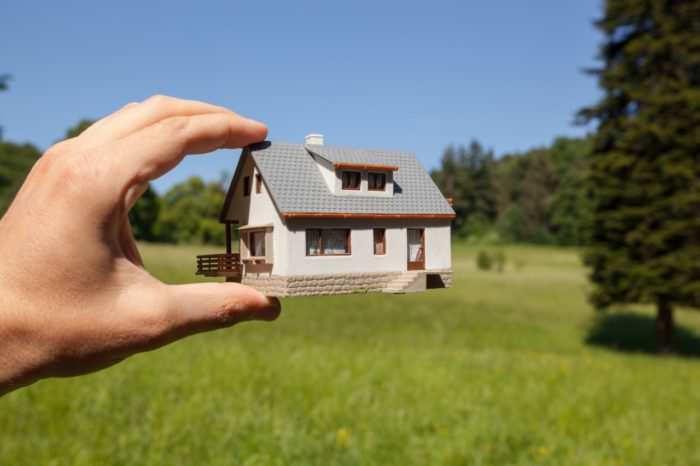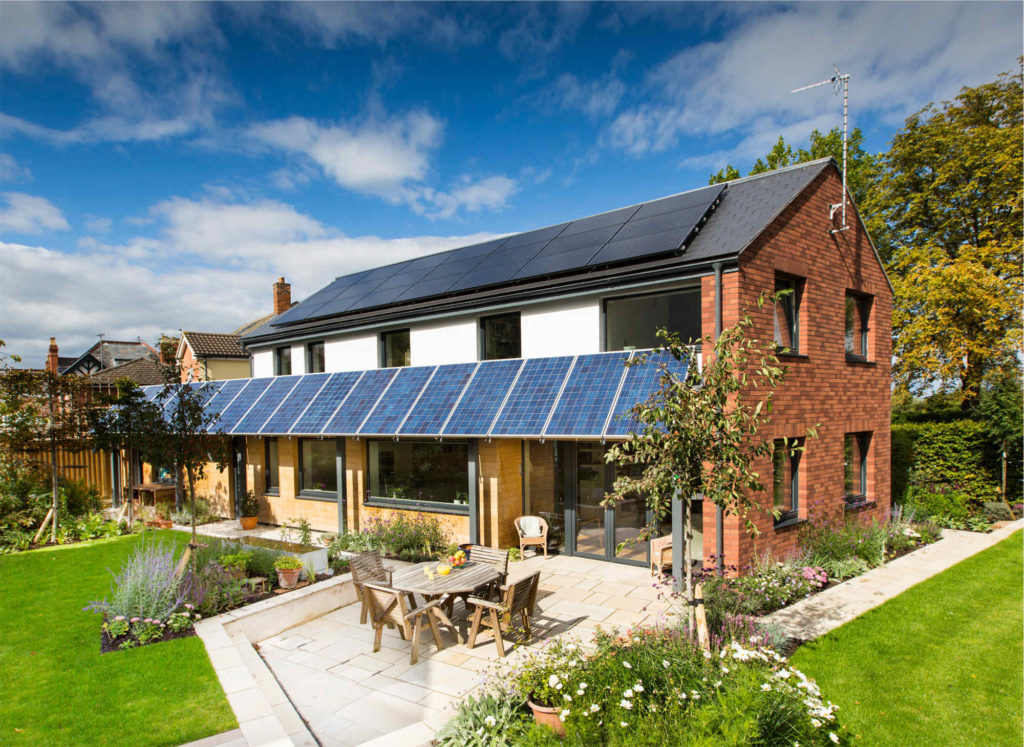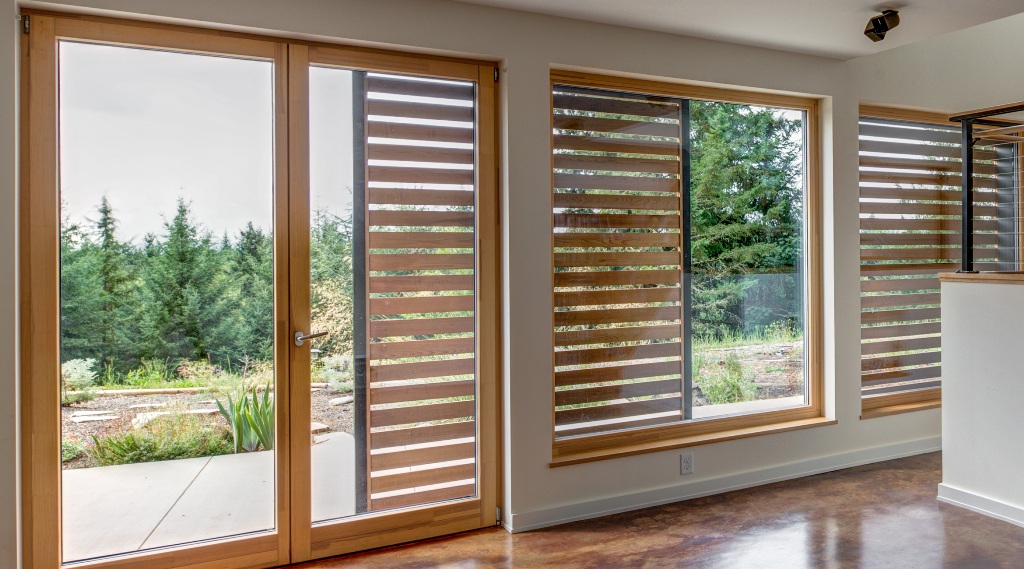If you are finally thinking of taking the step and building your own house , pay attention because the first step will be choosing the land or plot. And the choice of land to build is not an easy task and is very important when designing the house. No two lands or plots are the same, and it is that concepts such as alignments, orientation, unevenness, access to public services… are very important and condition the house to be built.
That is why it is always advisable to seek advice from the architectural firm that will carry out the housing project. Always according to your needs and depending on the place where the house is inserted. Although from here we will review the most important issues and recommendations when choosing a plot.
What are the most important requirements when choosing a plot of land? We tell you.
Keys to choose a land to build
It is possible that the current situation has influenced the decision to look for a plot of land to build and design your single-family home. And it is that the COVID-19 pandemic has exposed the deficits of our homes. And at the same time it has changed our habits regarding the relationship between housing and work. Talking about working at home or flexible work is the order of the day, especially in certain sectors, and that means that we spend more and more time at home. And that is why we value the conditions of our homes more.
Many people weighed the fact of being able to live in urban centers for the ease of movement and urban activity. And this paradigm shift has valued the space in our homes, especially outdoor space. Inclining more and more, to the extent that economic conditions allow, to buy land and build their own home. Tailor-made for each family, with recreational spaces and within a framework of privacy and security that was not so valued before.
Types of land to build
When it has been verified that the land in which we are interested is buildable, it is important to carefully study the following factors. All of them will influence the type of house that can be built. And even in the sale price of the land itself.
1. Location of the land to be built
The location of the plot is very important when choosing the land for our house . It is necessary to study the ease of connection with the main roads, by car or public transport. The security of the area, by location, perimeter fencing of the community, contracted security or doorman… As well as the proximity to basic services such as hospitals, schools, pharmacies, shops or recreation or sports areas.
Normally the proximity or good connection of these lands with the city or its urban nucleus is reflected in its price. Being perhaps the most valued condition when choosing land.
2. Orientations
Always with a view to building the most efficient house possible on the land, it is essential to choose the best orientation for the house . And we are not only talking about reducing consumption or bills, but about comfort. Interior comfort in the home with a constant temperature, avoiding excessive radiation, protecting the windows that need it. They are concepts typical of passive houses that contribute to the best use of the conditions of the plot.
In our area it is better to orient the house towards the southeast, taking advantage of sunlight as long as possible. This will light up the rooms, heating the interior of the house, free of charge, most of the time. But beware! That in summer these windows will have to be protected with some type of hood or brisoleil at times of excessive radiation. This protection will not prevent the entry of the sun’s rays in winter since they are more horizontal in that season of the year.
The presence of vegetation or large trees also have repercussions due to the shadow they cast with the rest of the energy performance of the house. Whether pre-existing or newly implemented. And they will have positive or negative consequences depending on the position and orientation in which they are inserted with respect to the house.
For all this we see that the orientation of the plot considerably affects the design of the house and its construction.
3. Topography and geotechnical study
The slope of the plot, the type of soil and the foundation that the house will need are also very important issues. All this will affect the price and type of construction possible on that land. Having to size a special foundation for a poorly compacted terrain or with the presence of a water table will take a good part of the budget of the house. That is why it is important to carry out a geotechnical study on the ground as soon as possible that will determine the type of soil and the foundation that we will need to project.
On the other hand, the shape of the plot also affects the type of house that can be designed. Thus, a more square plot allows more types of housing than a narrow and elongated plot. This type of more complicated plots to build usually condition homes with less freedom of architectural solutions.
Another issue that you must take into account is the topography of the plot: inclination, orientation and type of soil. Keep in mind that these factors will have such an impact on the cost of the foundation of the house, that it takes a good part of the construction budget (the national average is €22,600 for a one-storey house with a surface area of 115 square metres, according to the Fixr portal) as well as gaining natural light, a fundamental aspect to reduce energy expenditure and create a healthier living environment.
4. Land price
The price of a piece of land or plot will depend on the above aspects. In any case, like any building, it is the result of market supply and demand, its value varying over time. The repercussion of the price per square meter of the attached land can be analyzed, being able to obtain an estimate of how expensive or cheap our land is compared to other similar ones in the same area.
Can it be built on rustic land?
First of all, it is necessary to clarify what rural land is and if it is possible to build a house on rural or undeveloped land. These lands are protected in the urban planning regulations of the municipality for their value and relationship with nature, or for their use, which is normally livestock, agricultural, cultural or forestry.
As a general rule, it is not possible to legally build a single-family home on these lands. Although it is true that in some of them it is possible to build a house on rural land as long as it is associated with an agricultural or livestock operation. Even linking housing to use and exploitation, there are limitations in the construction of the house, both due to its formalization and size, always also associated with the size of the land itself. Normally only being able to be built on very large land.
How many meters of land do I need to build?
The square meters of land or plot to build our home fundamentally depend on two issues. First of the house that we want to build. And second of the housing that we can build by regulations on that land.
Each urban piece of land is registered and contemplated in the municipal urban regulations. And there are specified the conditions required for the house that you want to build in them. Issues such as occupancy, buildability, distance to boundaries, alignment of facades, buildable heights, overhangs, eaves… will condition and determine the type of house that we can build.
Let’s take the example that we want to build a house of 200 m2. Considering the rest of the favorable conditions, we have a 25% occupancy on the land. In order to build that 200 m2 house on that land, we will need the plot to have at least 800 square meters.
And it is that the concept of house and land are very united and linked in regulations. That is why it is essential to keep these circumstances in mind and thus be able to consult a technician or the City Council about these issues before buying land.
Minimum requirements that the plot must meet
The requirements of a piece of land to be able to build a house on it will depend mainly on municipal regulations. And specifically of the specific conditions stipulated in the general or partial plan for that sector or urban area.
Hence, the first step is to make sure that the land to be purchased is classified as urban land . These floors are those that are ready to be built. They are urbanized and included in the municipal management plan and at the same time have the conditions and services of electricity supply, sewage or water. Indispensable to build our home with full guarantee. That is why it is essential how to know if a land is buildable . For this, it is very important to contact the City Council to which the land to be built belongs, or the architecture studio that will know how to identify it in the municipal regulations. And so guide you towards the best solution.
Developable land is in the process of being urbanized, through a specific urban plan, and still does not have the minimum services necessary for housing.
Buildability and occupancy on a plot or land
Then, and already speaking of the specific conditions of the land and depending on the house we want to build, we must consider the concepts of occupation and buildability .
The occupation is the footprint that our building projects if we look at it from above, in m2 and in relation to the total m2 of our plot. In more urban areas, the permitted occupation is greater, seeking the greatest use of the m2 of housing, prioritizing them over the m2 of outdoor spaces. In areas with lower housing density, known as garden cities, the permitted occupation can be around 30 or 40% of the total plot. Ensuring at least 3 meters to boundaries or perimeter fences, and even 5 or 6 meters to the main road. Thus seeking the isolated building, with greater distance and privacy between dwellings.
The buildability on a piece of land is the percentage of surface that can be built or built on. Or what is the same, the number of square meters that can be built on a plot, whether on a single floor or on several. In the same way, in urban or more central areas, the permitted buildability is greater, and many heights can be built in a small plot space. Although this mainly goes to blocks of flats. In housing development land, the buildability is usually much lower, making sure to maintain a uniform size of homes and measured in such a way that a low building density is preserved.
Choice of land with house
For all these reasons, it is essential when choosing a plot of land to build on, to have a general idea of the keys and necessary conditions. Depending on the house we want to build, one piece of land or another will be more interesting. And having the information in advance, it is always much easier to get it right, and thus be able to end up building the home of our dreams, always on the appropriate land or plot.







